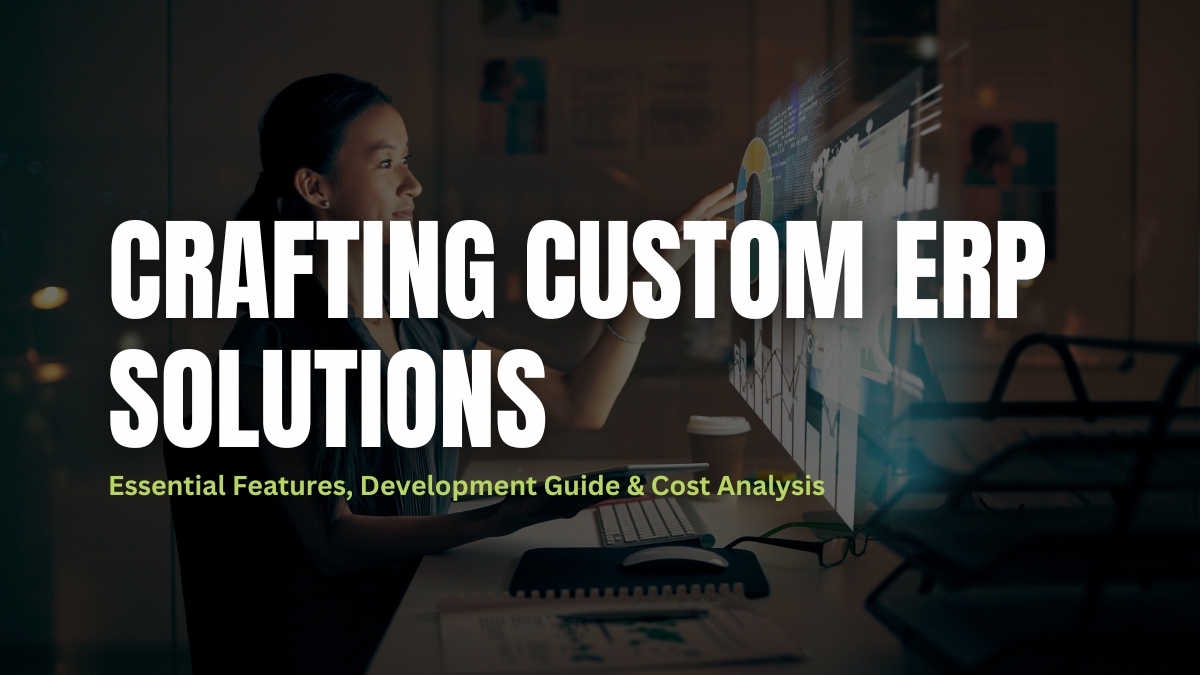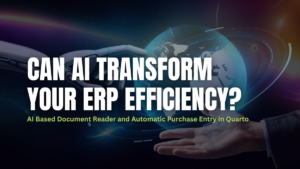In today’s dynamic business landscape, Enterprise Resource Planning (ERP) systems play a pivotal role in streamlining operations, enhancing efficiency, and driving growth. While off-the-shelf ERP solutions offer a solid foundation, many organizations find that customizing their ERP system to align with specific business needs is essential. In today’s blog, we delve into crafting custom ERP solutions, covering core considerations, must-have features, development guidelines, and cost analysis.
1. Core Considerations for Custom ERP Initiatives
When embarking on a custom ERP project, enterprise leaders and IT teams must carefully evaluate several critical factors:
a. Business Objectives and Requirements
- Define clear business objectives: What specific challenges or opportunities will the custom ERP address?
- Gather comprehensive requirements: Engage stakeholders across departments to understand their unique needs.
b. Scalability and Flexibility
- Consider future growth: Ensure the ERP system can scale seamlessly as the organization expands.
- Evaluate flexibility: Can the system adapt to changing business processes and regulatory requirements?
c. Integration Capabilities
- Assess integration needs: How will the ERP system connect with existing applications, databases, and third-party tools?
- Plan for data synchronization: Smooth data flow between modules is crucial.
2. Must-Have Features for Value-Driven ERP
A customized ERP system should incorporate features that maximize value and efficiency:
a. Modular Architecture
- Divide functionality into modules (finance, inventory, HR, etc.).
- Allows targeted development and easier maintenance.
b. Role-Based Access Control (RBAC)
- Granular access permissions based on user roles.
- Enhances security and ensures data privacy.
c. Workflow Automation
- Automate repetitive tasks and approvals.
- Boosts productivity and reduces manual errors.
d. Reporting and Analytics
- Real-time dashboards and customizable reports.
- Empowers data-driven decision-making.
3. Streamlined Development and Realistic Budgeting
Custom ERP development involves several stages:
a. Requirements Gathering and Analysis
- Collaborate with stakeholders to define detailed requirements.
- Identify customization points and prioritize features.
b. Solution Design and Architecture
- Create a blueprint for the ERP system.
- Decide on technology stack, database design, and integration patterns.
c. Development and Testing
- Agile development methodologies.
- Rigorous testing to ensure functionality and security.
d. Deployment and Training
- Roll out the customized ERP system.
- Train end-users and provide ongoing support.
e. Cost Analysis
- Consider development costs, licensing fees, infrastructure, and maintenance.
- Balance customization benefits with budget constraints.
Conclusion
Building a tailored ERP system requires a strategic approach, collaboration, and a deep understanding of organizational needs. By addressing core considerations, incorporating essential features, and managing costs effectively, businesses can create an ERP solution that truly aligns with their vision and objectives.
Remember, a well-crafted custom ERP system isn’t just an investment; it’s a competitive advantage that propels your organization toward success.





